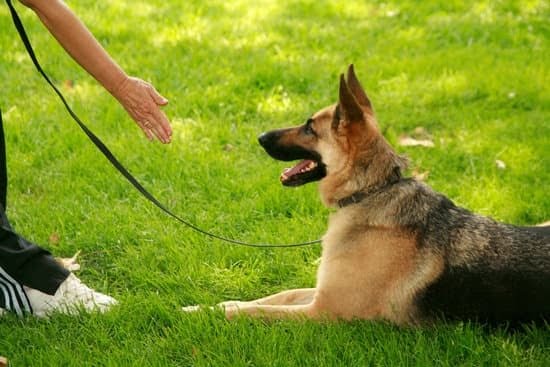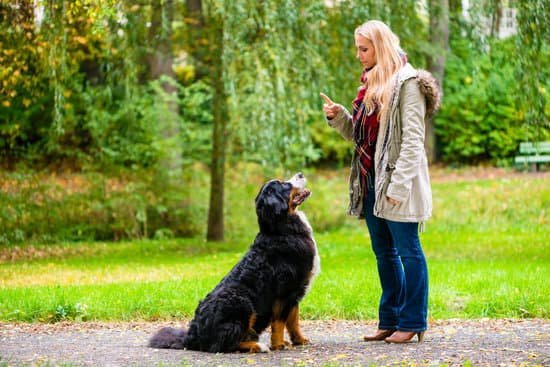There are many reasons why a dog might bark, and sometimes it can be difficult to figure out how to stop the behavior. However, with a little patience and some training, it is possible to get your dog to stop barking.
Barking can be a normal, healthy behavior for a dog, but it can also become a nuisance if it occurs too often or for no reason. If your dog is barking excessively, there are a few things you can do to try to stop the behavior.
One of the most important things is to determine why your dog is barking. There are many different reasons a dog might bark, such as excitement, fear, boredom, or aggression. Once you have determined the cause of the barking, you can begin to work on correcting the behavior.
If your dog is barking out of excitement, you will need to work on teaching him to calm down. One way to do this is to have a cue word or signal that you can use to get your dog to stop barking. When your dog is barking for no reason, say the cue word or signal and then give him a treat. This will help him to associate the word with positive behavior.
If your dog is barking out of fear or aggression, you will need to work on teaching him to be calm and submissive. One way to do this is to use a technique called “counter conditioning.” This involves exposing your dog to the things that scare him in a controlled environment, and then rewarding him for being calm.
It is also important to make sure your dog gets enough exercise and stimulation. A bored dog is more likely to bark out of boredom. Playtime and walks are essential for keeping your dog healthy and happy, and they can also help to reduce barking behavior.
With a little patience and some training, it is possible to get your dog to stop barking. By determining the cause of the barking and using positive reinforcement, you can help your dog to learn new, more appropriate behaviors.
How To Train Your Dog To Bark To Go Outside
In order to train your dog to bark to go outside, you will need to first condition your dog to bark on cue. Once your dog is barking consistently on cue, you can then begin to pair the cue with going outside.
Start by standing outside with your dog and cue him to bark. Once he barks, immediately take him outside. Reward him with a treat and lots of praise once he finishes his business outside. Repeat this process a few times each day until your dog begins to bark consistently whenever you cue him to do so.
Once your dog is responding consistently, start to delay your rewards. Instead of immediately rewarding your dog after he barks, wait until he has finished going outside before giving him a treat. This will help to ensure that your dog is only barking to go outside in order to be rewarded, and not just because he enjoys the sound of his own voice.
How To Train Your Dogs To Not Bark
Barking is a natural dog behavior, but it can also be very annoying to you and your neighbors. Fortunately, there are ways to train your dog to stop barking.
The first step is to determine why your dog is barking. There are many reasons, including excitement, fear, boredom, and aggression. Once you know the reason, you can start to address the problem.
If your dog is barking out of excitement, you’ll need to train them to calm down. One way to do this is to teach them to “speak” and “quiet” on cue. When your dog is barking excitedly, say “speak” and give them a treat. Once they stop barking, say “quiet” and give them another treat. You can also use a clicker to mark the behavior.
If your dog is barking out of fear or anxiety, you’ll need to help them feel more secure. One way to do this is to provide them with a safe place to retreat to, such as a crate or a designated spot in the house. You can also use positive reinforcement to help them feel more confident.
If your dog is barking out of boredom, you’ll need to provide them with more exercise and stimulation. A tired dog is less likely to bark. You can also give them toys and treats that keep them occupied.
If your dog is barking out of aggression, you’ll need to seek professional help. Aggressive behavior can be dangerous and should not be handled by amateurs.
If you are consistent and patient, you can teach your dog to stop barking. It may take some time and effort, but it is well worth it in the end.
How To Train Dog To Not Bark When You Leave
Leaving your dog at home can be difficult, especially when they start to bark incessantly as soon as you walk out the door. This can be a frustrating and annoying problem, but there are ways to train your dog to not bark when you leave.
The first step is to make sure that you are providing your dog with enough exercise and stimulation. A dog who is bored or restless is more likely to bark when their owner leaves. Regular walks and playtime will help keep your dog occupied and calm.
The next step is to create a cue or signal that you can use to let your dog know that you are leaving. This can be as simple as saying “I’m leaving” or “bye bye” before you walk out the door. Once your dog understands this cue, make sure you always leave in the same way. This will help your dog associate your departure with the cue and eventually learn to stop barking.
If your dog is still barking when you leave, you can try training them to “speak” or “quiet” on cue. Start by saying the cue word and then rewarding your dog with a treat when they stop barking. Once your dog understands this, you can start using the cue word in combination with your departure signal. Say the cue word and then leave the house, rewarding your dog with a treat when they remain quiet.
It may take some time and patience, but with consistent training, you can teach your dog to not bark when you leave.
Crate Training Older Dog Barking
There are a few things to consider when crate training an older dog that is barking. The first is to make sure that the dog is comfortable and happy in the crate. The crate should be big enough for the dog to stand up and turn around in, but not too big that the dog can use one end as a bathroom. The second is to make sure that the dog is getting enough exercise. A tired dog is less likely to bark. The third is to make sure that the dog is getting enough attention and stimulation. A bored dog is more likely to bark. The fourth is to make sure that the dog is not getting too much attention for barking. Attention, even negative attention, can reinforce the behavior. The fifth is to make sure that the dog is not barking out of fear or anxiety. If the dog is barking out of fear or anxiety, then crate training may not be the best solution and you may need to consult with a professional behaviorist.

Welcome to the blog! I am a professional dog trainer and have been working with dogs for many years. In this blog, I will be discussing various topics related to dog training, including tips, tricks, and advice. I hope you find this information helpful and informative. Thanks for reading!





